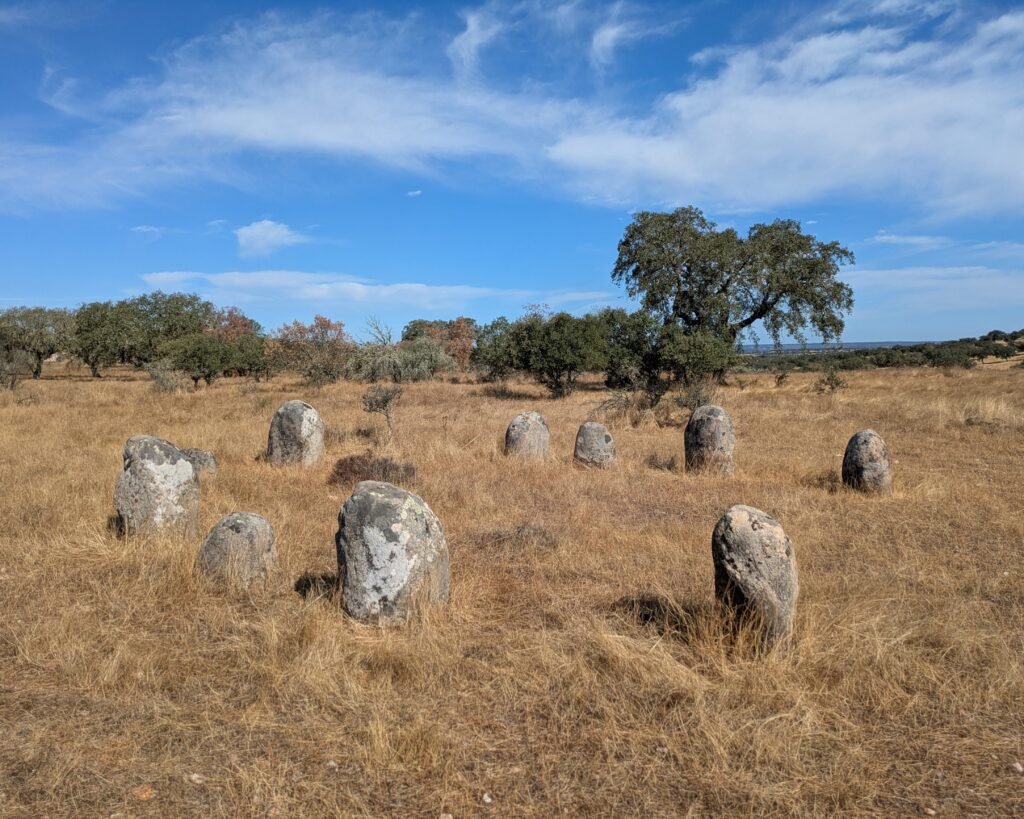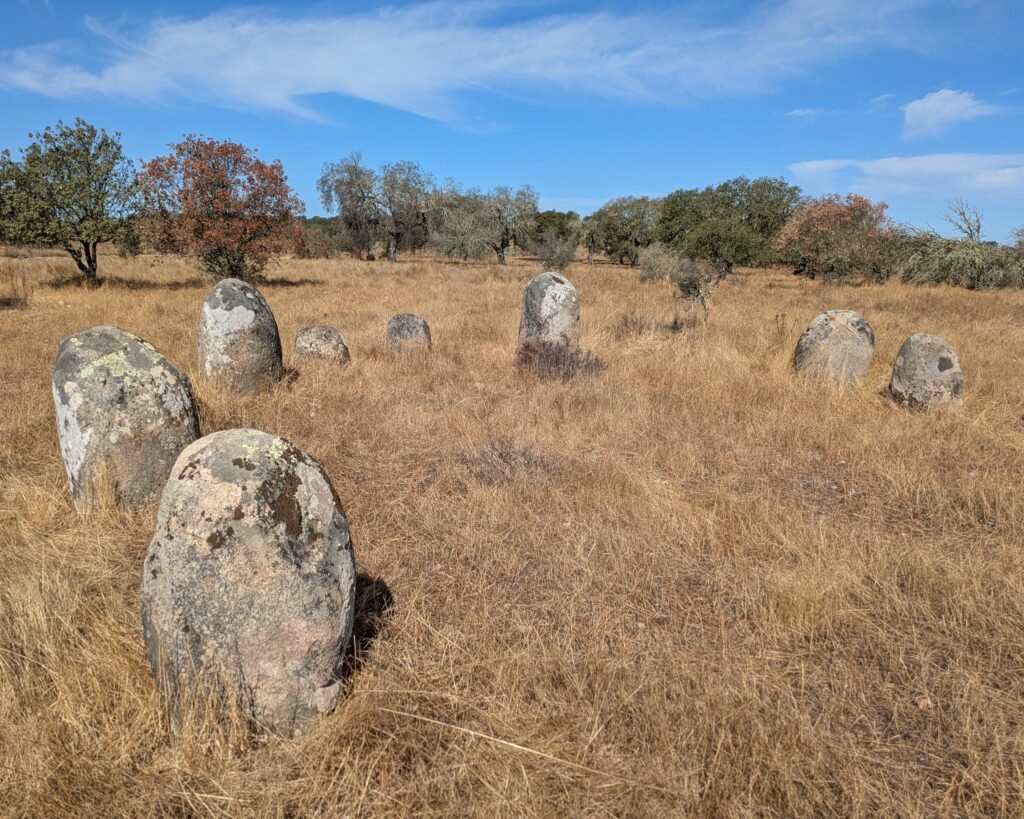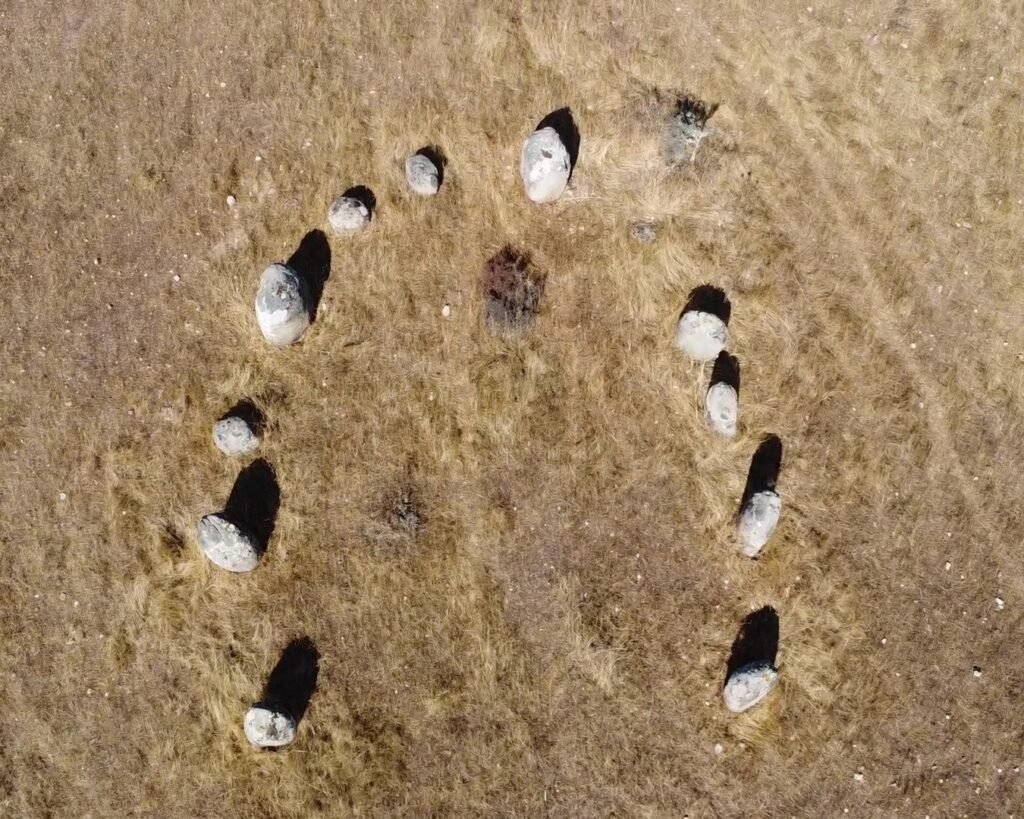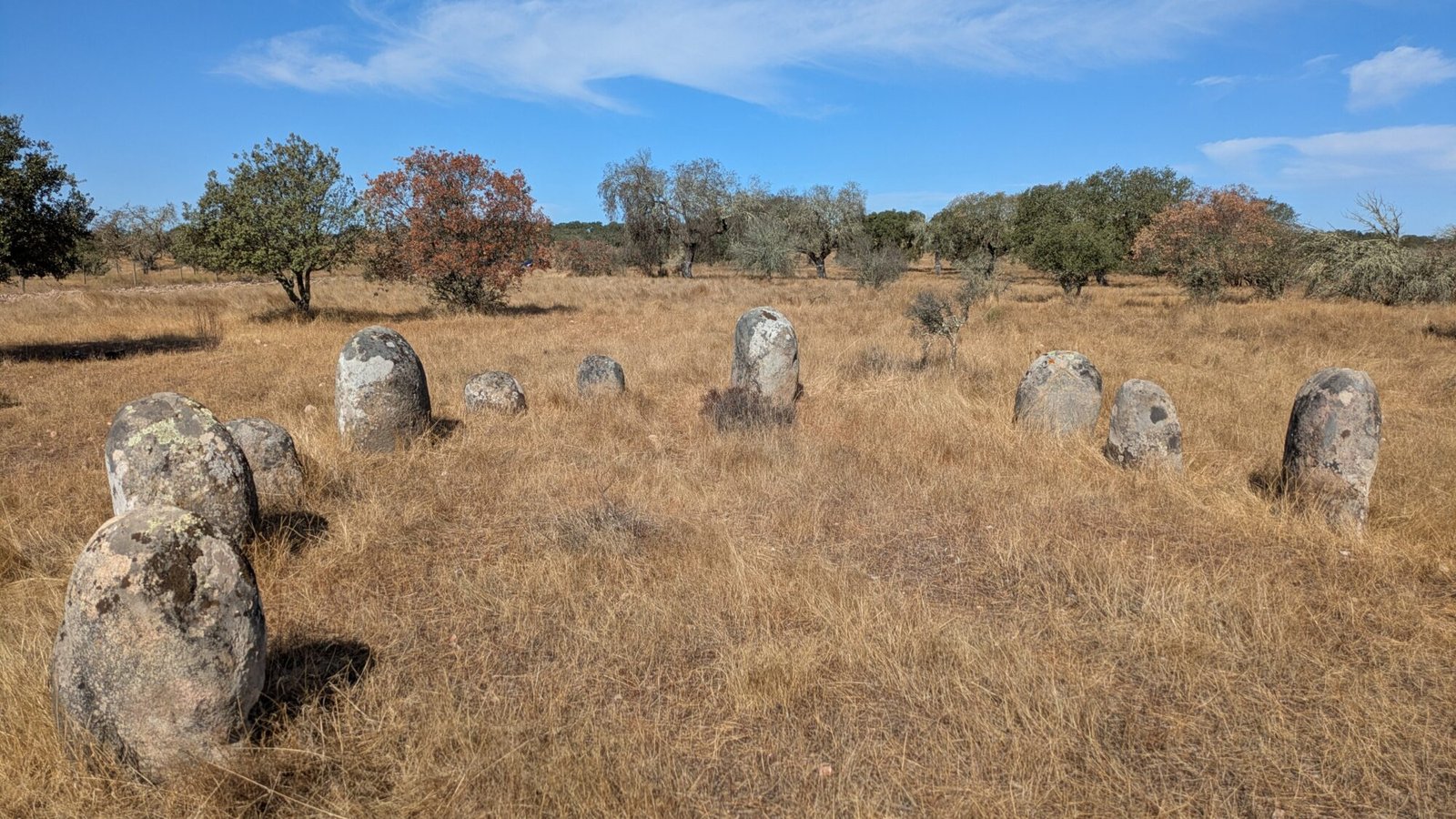Also known as: Cromeleque do Monte da Têra, Cromeleque do Monte das Figueiras, Recinto Megalítico de Vale d’El Rei
Walking among these perfectly arranged stones on an Alentejo hilltop, you can almost feel the ancientness of the land. These stones were placed here six or seven thousand years ago, and likely were being used and visited by people for many hundreds, if not thousands of years. Despite the careless disregard of poorly-educated farm labourers, they are once again standing proud in their original locations.




This cromeleque forms a clear and nearly perfect horseshoe, opening to the East. There are 12 menires in the group, all reasonably short (each about 1m tall). It is the smallest cromeleque in the Iberian peninsula.1
It was discovered in the 1950s by Vera and Georg Leisner. It was then rediscovered 20 years later by a team from the Portuguese Geological Survey, who renamed it the “Cromeleque do Monte das Figueiras.” The Vale d’El Rei Cromlech was apparently the first monument of its kind to be recorded in Portugal. Besides being the first, it was also the smallest and best preserved.
Unfortunately, it was then dismantled for agricultural work. It was excavated and recovered in 2001 by Manuel Calado and Leonor Rocha. The excavation allowed the location and excavation of all the alveoli of the twelve menhirs, and it was also possible to gather the fragments of the six fractured menhirs, all of which still had fragments of their bases buried in situ; of these, the worst preserved is menhir 8, from which numerous fragments are missing.
The excavations of the cromeleque turned up few artefacts: some ceramic fragments and some fragments of stone tools. It was not possible to date the construction of the monument, but it seemed to be built during the early or middle Neolithic and then used up through the late Neolithic (3rd millennium BC). The positioning of the monument, opening to the East (and likely the Spring Equinox), confirms the astronomical orientations of megaliths in the region. The number of menires (12) seems also to be significant: there are often groups of 12 or 13 in regional cromeleques.2
Location
The cromeleque is in the Alentejo, district of Évora. It’s in the municipality of Mora, parish of Pavia. It is in a private farmland just outside the town of Pavia.
Access
The cromeleque is on private land and is NOT publicly accessible.
I was able to visit by making a special arrangement with the landowner. The landowner does not want people entering the land: there have been multiple times that unauthorized visitors have left rubbish, damaged fences, and had dangerous encounters with the livestock.

Links
- Entry (in English) in the Megalithic Portal
- Description (in Portuguese) from the Museu do Megalitismo de Mora
- Description (in Portuguese) from the Câmara Municipal de Mora
- Description (in Portuguese) from Archaeologist’s Portal of Directorate-General of Cultural Heritage
Nearby
The Conjunto Megalítico do Monte de Têra is on the same private land. Again, it is not possible to visit without making arrangements with the landowner.
In the town of Pavia, the Anta-Capela de São Dinis is easily visitable. There are many other prehistoric sites in the region. You can consult with the Interactive Museum of Megalithism, in the town of Mora (16km to the West), for more information.

Pingback:Conjunto Megalítico do Monte de Têra - Prehistoric Portugal